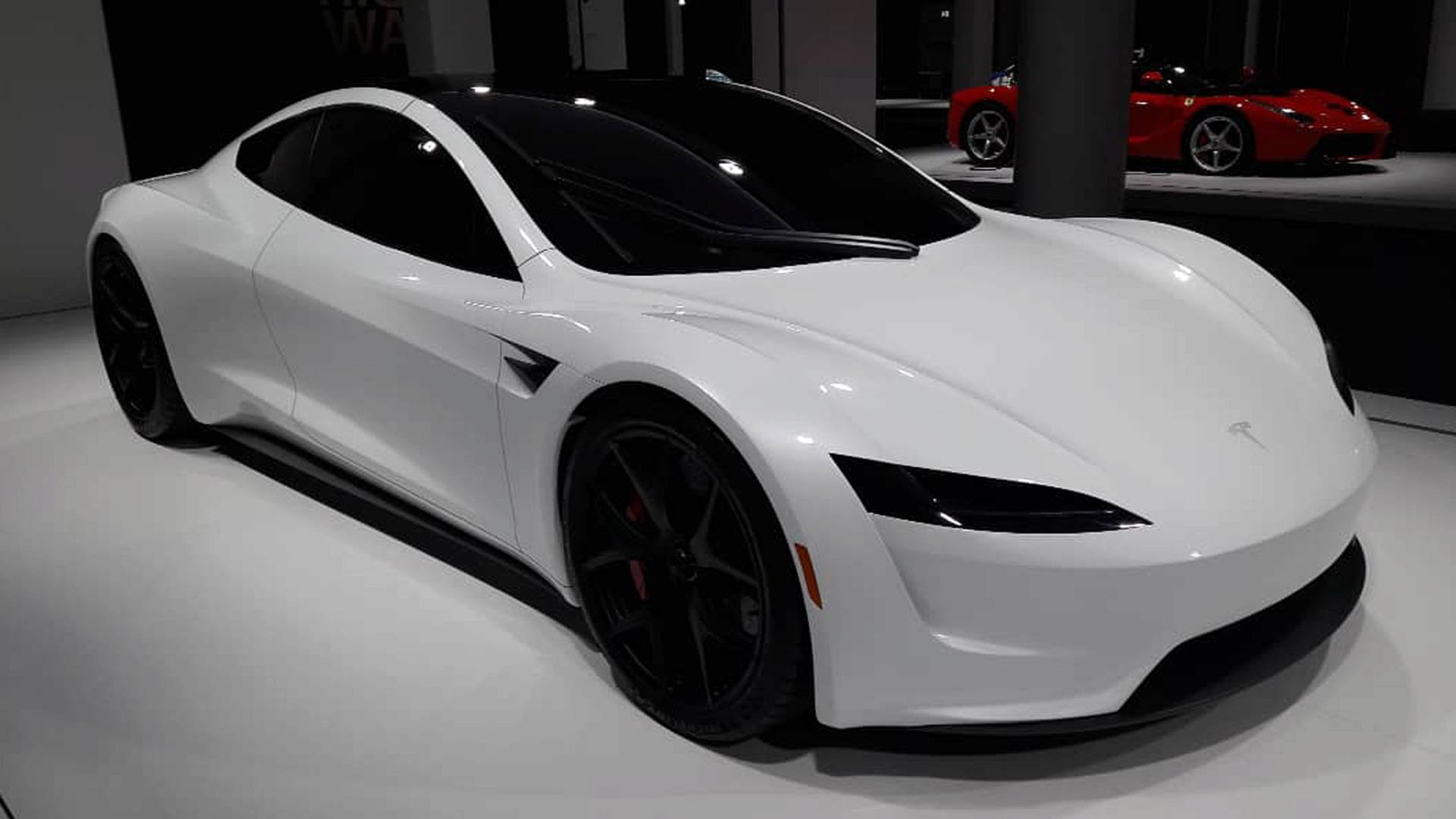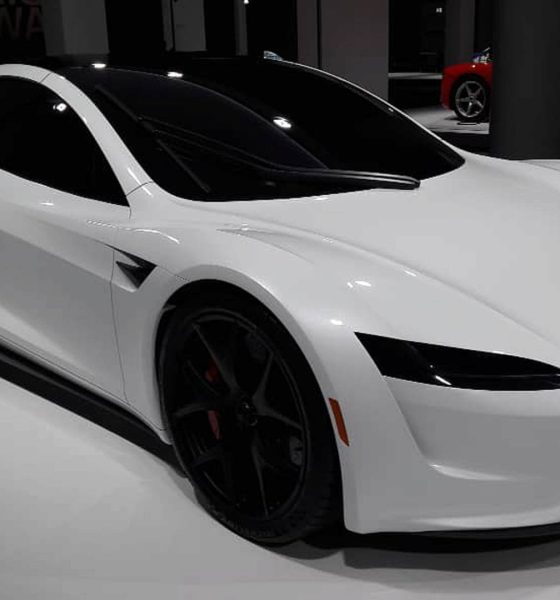

Investor's Corner
Tesla’s (TSLA) massive valuation could make S&P 500 inclusion complicated
Tesla (NASDAQ: TSLA) is set to join the S&P 500 on December 21st, making it one of the newest members of the world’s most influential stock index. However, Tesla’s gigantic market capitalization, which has made it the most valuable car company globally, could make the inclusion process slightly more complicated than initially planned.
Tesla’s over $423 billion market cap will make it the largest company ever to be added to the S&P 500 Index. Putting the entire company into the new benchmark would force index-tracking funds to sell upwards of $40 billion in stock to make room for the electric car company. Because of this, the S&P’s overseer and consultant, the S&P Dow Jones Indices, is considering the option of adding Tesla to the index in phases or tranches.
After being snubbed from the index in early September, Tesla is finally getting its shot to join the S&P. But while the company is experiencing an over 400% growth in share price so far this year, adding Tesla in more than one phase seems to be the more favorable scenario. However, the S&P Dow Jones Indices will seek out feedback from investors, questioning them on which strategy is more appealing to them: adding TSLA all at once or in several chunks. It is unknown which companies will be replaced by Tesla, but the S&P plans to name them later.
Howard Silverblatt, a Senior Index Analyst at S&P Dow Jones, stated that the decision to add the electric automaker wasn’t a simple one, especially considering the magnitude of Tesla’s inclusion. “It wasn’t easy to make such an important decision, and this decision has a big impact,” he said. Silverblatt added that getting insight from investors will assist in the decision-making process.
“An open-ended dialog with investors will only help. You can’t put a company in at such a high level just like you would any other firm. The times have changed, the magnitude of the stocks that are being added has changed, too,” he added.
Tesla will end up likely being one of the top 10 largest stocks in the S&P when it joins the index on December 21st, Bloomberg reported. Estimating that it will fall in between Johnson & Johnson and Procter & Gamble Co., Tesla’s valuation would be the equivalent of the 60 smallest stocks in the benchmark. However, S&P Dow Jones uses a float-adjusted market-cap to determine the weight instead of the straight figure.
When the S&P 500 is reshuffled, which happens on a quarterly basis to rebalance the index, changes occur due to fluctuations in a company’s size. Depending on growth or a reduction of size, some stocks may move from the S&P’s small-cap index to the large-cap, or vice versa.
In Tesla’s circumstance, no company that will be removed is large enough to offset the automaker’s inclusion into the S&P 500. This is why the index’s overseer is considering adding the company in more than one tranche.
Lawrence Creatura, a portfolio manager at PRSPCTV Capital LLC, told Bloomberg that this is effectively “trading a pawn on the chessboard for a queen.”
“The size of Tesla as it’s being included in the index is much larger relative to the company that is likely to come out. That’s going to create a lot of shuffling among passive funds that track the S&P 500 explicitly,” Creatura also said.
On the news that TSLA would join the S&P on Monday evening, shares of the automaker’s stock spiked over 13% in after-hours trading. At the time of writing, TSLA shares were trading at $444.10, up over 9%.
After finally attaining the four consecutive profitable quarter threshold required to join the index, Tesla is riding a strong stream of momentum heading into the end of 2020. In its most successful year as a company yet, Tesla plans to close out 2020 with a bang by accomplishing its 500,000 vehicle delivery mark, which was set at the beginning of the year before the COVID-19 pandemic began. With increased production and growing demand, Tesla could reach a one million car a year production and delivery rate, surging the popularity and adoption of electric cars and phasing out the use of petrol-powered engines.
Disclaimer: Joey Klender is a TSLA Shareholder.

Investor's Corner
Tesla stock closes at all-time high on heels of Robotaxi progress

Tesla stock (NASDAQ: TSLA) closed at an all-time high on Tuesday, jumping over 3 percent during the day and finishing at $489.88.
The price beats the previous record close, which was $479.86.
Shares have had a crazy year, dipping more than 40 percent from the start of the year. The stock then started to recover once again around late April, when its price started to climb back up from the low $200 level.
This week, Tesla started to climb toward its highest levels ever, as it was revealed on Sunday that the company was testing driverless Robotaxis in Austin. The spike in value pushed the company’s valuation to $1.63 trillion.
Tesla Robotaxi goes driverless as Musk confirms Safety Monitor removal testing
It is the seventh-most valuable company on the market currently, trailing Nvidia, Apple, Alphabet (Google), Microsoft, Amazon, and Meta.
Shares closed up $14.57 today, up over 3 percent.
The stock has gone through a lot this year, as previously mentioned. Shares tumbled in Q1 due to CEO Elon Musk’s involvement with the Department of Government Efficiency (DOGE), which pulled his attention away from his companies and left a major overhang on their valuations.
However, things started to rebound halfway through the year, and as the government started to phase out the $7,500 tax credit, demand spiked as consumers tried to take advantage of it.
Q3 deliveries were the highest in company history, and Tesla responded to the loss of the tax credit with the launch of the Model 3 and Model Y Standard.
Additionally, analysts have announced high expectations this week for the company on Wall Street as Robotaxi continues to be the focus. With autonomy within Tesla’s sights, things are moving in the direction of Robotaxi being a major catalyst for growth on the Street in the coming year.
Elon Musk
Tesla needs to come through on this one Robotaxi metric, analyst says
“We think the key focus from here will be how fast Tesla can scale driverless operations (including if Tesla’s approach to software/hardware allows it to scale significantly faster than competitors, as the company has argued), and on profitability.”

Tesla needs to come through on this one Robotaxi metric, Mark Delaney of Goldman Sachs says.
Tesla is in the process of rolling out its Robotaxi platform to areas outside of Austin and the California Bay Area. It has plans to launch in five additional cities, including Houston, Dallas, Miami, Las Vegas, and Phoenix.
However, the company’s expansion is not what the focus needs to be, according to Delaney. It’s the speed of deployment.
The analyst said:
“We think the key focus from here will be how fast Tesla can scale driverless operations (including if Tesla’s approach to software/hardware allows it to scale significantly faster than competitors, as the company has argued), and on profitability.”
Profitability will come as the Robotaxi fleet expands. Making that money will be dependent on when Tesla can initiate rides in more areas, giving more customers access to the program.
There are some additional things that the company needs to make happen ahead of the major Robotaxi expansion, one of those things is launching driverless rides in Austin, the first city in which it launched the program.
This week, Tesla started testing driverless Robotaxi rides in Austin, as two different Model Y units were spotted with no occupants, a huge step in the company’s plans for the ride-sharing platform.
Tesla Robotaxi goes driverless as Musk confirms Safety Monitor removal testing
CEO Elon Musk has been hoping to remove Safety Monitors from Robotaxis in Austin for several months, first mentioning the plan to have them out by the end of 2025 in September. He confirmed on Sunday that Tesla had officially removed vehicle occupants and started testing truly unsupervised rides.
Although Safety Monitors in Austin have been sitting in the passenger’s seat, they have still had the ability to override things in case of an emergency. After all, the ultimate goal was safety and avoiding any accidents or injuries.
Goldman Sachs reiterated its ‘Neutral’ rating and its $400 price target. Delaney said, “Tesla is making progress with its autonomous technology,” and recent developments make it evident that this is true.
Investor's Corner
Tesla gets bold Robotaxi prediction from Wall Street firm
Last week, Andrew Percoco took over Tesla analysis for Morgan Stanley from Adam Jonas, who covered the stock for years. Percoco seems to be less optimistic and bullish on Tesla shares, while still being fair and balanced in his analysis.

Tesla (NASDAQ: TSLA) received a bold Robotaxi prediction from Morgan Stanley, which anticipates a dramatic increase in the size of the company’s autonomous ride-hailing suite in the coming years.
Last week, Andrew Percoco took over Tesla analysis for Morgan Stanley from Adam Jonas, who covered the stock for years. Percoco seems to be less optimistic and bullish on Tesla shares, while still being fair and balanced in his analysis.
Percoco dug into the Robotaxi fleet and its expansion in the coming years in his latest note, released on Tuesday. The firm expects Tesla to increase the Robotaxi fleet size to 1,000 vehicles in 2026. However, that’s small-scale compared to what they expect from Tesla in a decade.
Tesla expands Robotaxi app access once again, this time on a global scale
By 2035, Morgan Stanley believes there will be one million Robotaxis on the road across multiple cities, a major jump and a considerable fleet size. We assume this means the fleet of vehicles Tesla will operate internally, and not including passenger-owned vehicles that could be added through software updates.
He also listed three specific catalysts that investors should pay attention to, as these will represent the company being on track to achieve its Robotaxi dreams:
- Opening Robotaxi to the public without a Safety Monitor. Timing is unclear, but it appears that Tesla is getting closer by the day.
- Improvement in safety metrics without the Safety Monitor. Tesla’s ability to improve its safety metrics as it scales miles driven without the Safety Monitor is imperative as it looks to scale in new states and cities in 2026.
- Cybercab start of production, targeted for April 2026. Tesla’s Cybercab is a purpose-built vehicle (no steering wheel or pedals, only two seats) that is expected to be produced through its state-of-the-art unboxed manufacturing process, offering further cost reductions and thus accelerating adoption over time.
Robotaxi stands to be one of Tesla’s most significant revenue contributors, especially as the company plans to continue expanding its ride-hailing service across the world in the coming years.
Its current deployment strategy is controlled and conservative to avoid any drastic and potentially program-ruining incidents.
So far, the program, which is active in Austin and the California Bay Area, has been widely successful.








